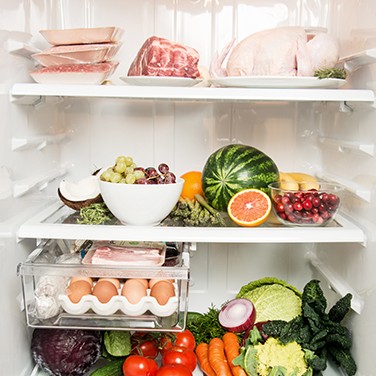Home Kitchens Flunk Health Inspection
By Mike Howie
You may think the kitchen in your home is the picture of cleanliness, with a place for everything and everything in its place. But just because it’s neat and tidy doesn’t mean that it reaches the same level of sanitation as professional kitchens. In fact, of 100 Philadelphia homes surveyed by researchers from Drexel University, the vast majority would have violated at least one of the highly regulated standards to which restaurants are held.
Drexel associate professor Jennifer Quinlan, who teaches in the university’s College of Nursing and Health Professions, teamed up with former Drexel graduate students Patricia Borrusso and Shauna Henley (who now works at the University of Maryland) to conduct two studies published in Food Protection Trends and the Journal of Food Protection.
The fi rst of the two studies was a visual audit based on a checklist similar to those used by health inspectors. In the second study, the researchers collected samples from various locations within the kitchens and tested them for indicator organisms and pathogens. These studies are both unusual and important — most studies about food safety examine restaurant kitchens, not home kitchens.
The Violations
Many of the code violations were related to food storage. Raw meat was improperly stored in a staggering 97 percent of homes, placed above food that was ready to eat and, in some cases, dripping juices onto other foods. In 43 percent of homes, refrigerators were warmer than the recommended 41 degrees Fahrenheit that limits bacterial growth. Six percent of homes even stored raw meat and poultry at room temperature.
Other violations pertained to general kitchen upkeep and cleanliness, including the use of worn or cracked wooden cutting boards that could harbor bacteria (found in 76 percent of homes), a lack of available soap (in 2 percent of bathrooms and 4 percent of kitchens), no towels in the kitchen (9 percent of homes), animals in areas used for food preparation and consumption (27 percent of homes), evidence of pest infestations (65 percent of homes), and more.
The Pathogens
All of these violations contributed to the variety of foodborne pathogens that the team found in their second study. At least one pathogen was found in 45 percent of the homes tested, and more than one type of pathogen was present in 12 percent of homes. Fecal coliforms were present in 44 percent of homes (usually found in sinks or on sponges and dishcloths, and associated with a lack of cleaning materials).
Staphylococcus aureus, also associated with a lack of cleaning materials, was found in 39 percent of homes, most frequently on countertops and refrigerator door handles. Listeria — which can be particularly harmful to pregnant women — and Escherichia coli were found in 15 percent of homes. Of the surfaces tested, the researchers found that sponges and dishcloths were by far the most likely to be contaminated (at 64 percent). Bacteria grow on the soft, damp surfaces and are then spread throughout the kitchen.
Perhaps it’s not surprising that home kitchens don’t compare to restaurant kitchens — they’re not held to the same standards. Animals aren’t allowed in most shops and restaurants, and they’d certainly never be found on a kitchen counter while a chef prepares a five-star meal. Professional kitchens also mandate things like hair nets, separate sinks for hand washing, and cleaning cloths soaked in a sanitary or disinfecting solution.
Borrusso and Quinlan suggest that better education is the key to safer practices in the kitchen, and that our modern technologies can play a key role in spreading that education. “For example, if I am searching for a recipe for chicken, have something appear with safe handling techniques for chicken,” Quinlan suggested. Their study is the first step in that education: even with a small sample size, it shows just how prevalent these issues can be. Sharing their findings with the world may encourage people to be more mindful about how they run their kitchens.
Food Safety at Home: The Basics
- Use one sink for washing food, utensils and cookware and another for hand washing
- Keep your refrigerator temperature at or below 41 degrees Fahrenheit
- Store raw meat in a refrigerated drawer and away from ready-to-eat foods
- Sand or replace grooved or cracked wooden cutting boards
- Keep dish towels clean and dry, or use paper towels
- Keep pets away from surfaces that are used to prepare or consume food



